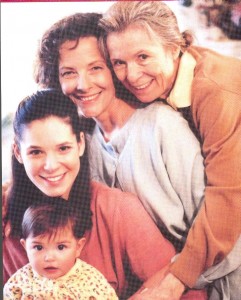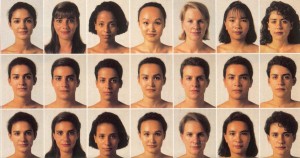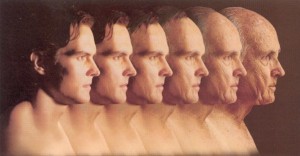A. INTRODUCTION:
Like just about every other aspect of human existence the face varies with age. To state that the face changes with age is hardly news.
The periods of human ages can be arbitrarily grouped into four main categories. These categories are:
- BABIES
- CHILDREN
- ADULTS
- OLD AGE
Although the primary focus of this presentation is the adult face and its archetypal form, there are several other facial “configurations” which occur before and after the adult face and are distinct in their own right.
The following are the variations of the face from the adult archetypal mask that occur with age:
B. THE BABY FACE:
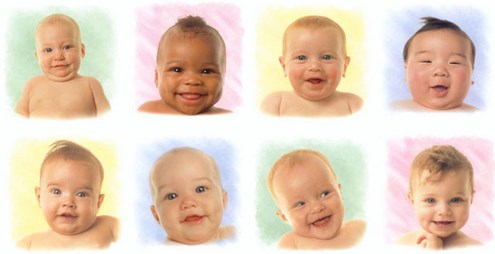
There is one other period of major personal visual attractiveness. This is the period of the infant or “infancy”. The infant has evolved to be highly attractive/attracting, in order to evoke the nurturing instinct in the adult, motivating the adult to protect the infant and give it the best chance to survive during this vulnerable period in its life. In a nurturing way the adult is attracted to the baby and nurtures and protects it until it eventually is able to care for itself.
This “baby” period lasts from approximately 1 month to 2 years of age.
The typical baby face varies from the archetypal adult face in the following manner:
- Bigger eyes in proportion to its face
- Rounder face
- Plumper cheeks
- Larger head in proportion to its face
- Short, flat eyebrows
- Short, relatively small, turned up nose
C. THE CHILD FACE:
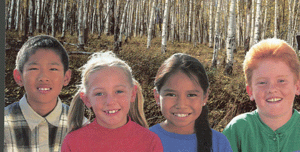
The infant becomes less and less attractive as an object of nurturing as it becomes less and less dependent on the adult, maturing into early and then later childhood. The average child’s face is a various blend of the features of the baby and the adult in a mixture that is relatively less attractive than either the baby or the adult archetypal face.
The average child’s face varies from the archetypal adult face in the following manner:
- Teeth variously missing or spaced
- Freckles or acne
- Flat eyebrows fuller than the child’s
- Ears that appear oversized
- Nose which generally appears somewhat small, short and wide
- Relatively flatter and less well defined cheeks
- More “baby fat” generally throughout the face resulting in less distinctive features
D. THE YOUNG ADULT FACE:
The archetypal mask which we present here is the mask of the young adult’ age 14 to 24 years. This is the period of life when the face is normally at its “attractive peak”.That is, it is the most attractive that it will ever be during this period of the life of any individual. The facial form during this time is generally fairly static, and is distinctly different from the facial form of an infant, that of the child or the old age adult face.
The adult archetypal mask is essentially the face of the post-pubescent and young adult. For most people the closer they are to the age range of 14 to 24 years, the closer their face will match the mask. This is actually the “window” of maximum correlation with the mask and hence of maximum personal visual attractiveness for any human. That is, for most people their face will be at its “lifetime” most attractive during this period.
Within the adult face group the face can vary from the adult archetypal mask as a function of both sex and race. Regarding these variations see the sections below: “Face Variations By Sex” and “Face Variations By Ethnic Group”.
D. THE AGING ADULT FACE:
As an individual matures the face “ages”. Essentially as any person ages beyond about 24 years the face begins to gradually match the mask less and less. This of course is not an overnight phenomenon but as a rule is gradual occurring over a period of years. This “face aging” is actually a function of several physiologic changes that occur with time.
The collagen in the face becomes less elastic and allows the soft tissue features of the face to sag inferiorly. In addition facial fat is generally lost with age making the facial soft tissues thinner. Finally the facial soft tissues gradually atrophy compounding the visual “thinning” of the facial soft tissues, as well as making the facial bones appear more prominent.
As a result the normal aging adult face with time progressively varies from the archetypal adult Mask in the following manner:
- The cheeks sag inferiorly resulting the appearance of jowls
- The corners of the mouth move inferiorly resulting in a slight frown look
- The tissue around the eyes sag inferiorly
- The eyelids, upper and lower, themselves sag inferiorly
- The tissue of the forehead drifts inferiorly, creating wrinkles and dropping the eyebrows downward and giving them a flatter appearance
- The nose may elongate and move the tip inferiorly
- The nose may develop a small to pronounced dorsal hump
- The tip of the nose may enlarge and become bulbous
- Generalized wrinkling of the face may occur
